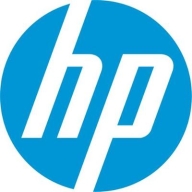

HP Wolf Security and Cortex XDR by Palo Alto Networks are two leading security solutions. Users suggest that Cortex XDR by Palo Alto Networks holds the edge due to its comprehensive features, though HP Wolf Security often receives praise for its cost-effectiveness and customer support.
Features: HP Wolf Security is favored for its robust threat isolation capabilities, ease of use, and cost-effectiveness. Cortex XDR by Palo Alto Networks is acclaimed for its advanced threat detection, versatile integration options, and holistic security approach.
Room for Improvement: Users of HP Wolf Security highlight the need for more frequent updates, better scalability options, and improved dashboard functionality. Cortex XDR by Palo Alto Networks could benefit from a more intuitive configuration process, enhanced alerting systems, and better documentation.
Ease of Deployment and Customer Service: HP Wolf Security is noted for its straightforward and quick deployment process, alongside responsive customer support. Conversely, Cortex XDR by Palo Alto Networks may require a steeper learning curve but also benefits from thorough support services.
Pricing and ROI: HP Wolf Security is praised for its overall affordability, entry-level pricing starts at $16.25 per month, and reasonable ROI. Meanwhile, Cortex XDR by Palo Alto Networks, although perceived as more expensive with pricing over $80 per month, is justified by users due to its advanced capabilities and solid ROI.
| Product | Market Share (%) |
|---|---|
| Cortex XDR by Palo Alto Networks | 3.7% |
| HP Wolf Security | 6.3% |
| Other | 90.0% |

| Company Size | Count |
|---|---|
| Small Business | 41 |
| Midsize Enterprise | 18 |
| Large Enterprise | 36 |
| Company Size | Count |
|---|---|
| Small Business | 3 |
| Large Enterprise | 5 |
Cortex XDR by Palo Alto Networks delivers comprehensive endpoint security, integrating well with other systems to offer robust threat detection and real-time protection through AI-driven analytics.
Cortex XDR by Palo Alto Networks offers advanced endpoint protection and threat detection through AI and behavior-based analytics. Its user-friendly design simplifies integration with firewalls, delivering multi-layered protection with low resource consumption. Valued for policy management, USB control, and incident correlation, Cortex XDR enhances threat management and real-time threat hunting capabilities. However, users note challenges with third-party integration, reporting, and dashboard automation. Agent performance across operating systems and memory consumption are areas for improvement, alongside reducing false positives and simplifying endpoint management and setup.
What features does Cortex XDR offer?
What benefits should be considered in reviews?
Cortex XDR is crucial in industries requiring robust endpoint protection, such as finance, healthcare, and technology. It supports malware detection, behavioral analysis, and ransomware mitigation across endpoints, including remote work environments, providing comprehensive threat visibility and security policy management. The solution's integration with firewalls and specialized industry requirements enhances security posture in diverse operational settings.
HP Wolf Security is a comprehensive cybersecurity solution that bolsters your organization's cyber-resilience on multiple fronts. With its full-stack security approach, it ensures layered protection from hardware to the cloud, providing a robust defense against cyber threats. HP Wolf Security introduces endpoint isolation, a cutting-edge feature that effectively halts threats that may go unnoticed by Next-Generation Antivirus (NGAV) and Endpoint Detection and Response (EDR) systems. Moreover, it extends its security coverage to printers, equipping them with advanced detection and self-healing capabilities to further safeguard your digital ecosystem. This integrated solution streamlines IT and security risk management, resulting in fewer alerts and false positives, and reduces the time and effort required for endpoint incident analysis and remediation. Notably, HP Wolf Security prioritizes productivity, allowing you to manage risk without disrupting the user experience, enabling worry-free work from anywhere, and offering rapid IT disaster recovery at scale.
We monitor all Endpoint Protection Platform (EPP) reviews to prevent fraudulent reviews and keep review quality high. We do not post reviews by company employees or direct competitors. We validate each review for authenticity via cross-reference with LinkedIn, and personal follow-up with the reviewer when necessary.